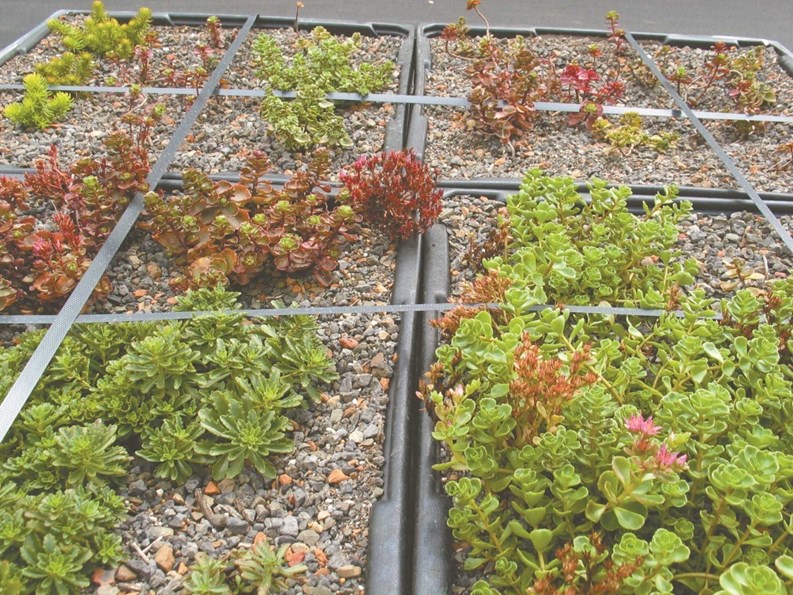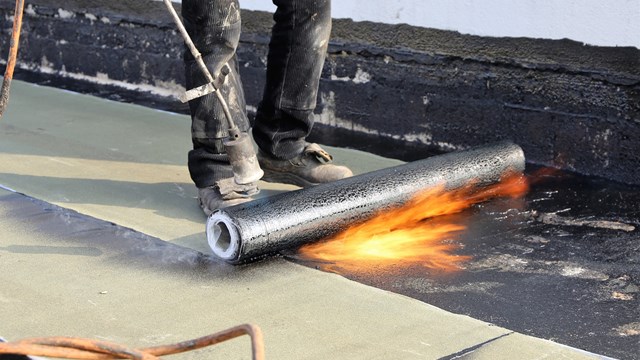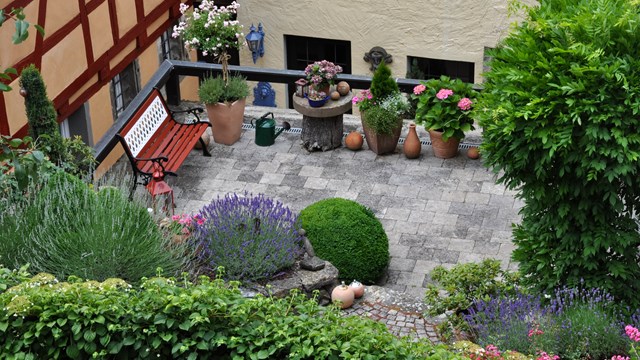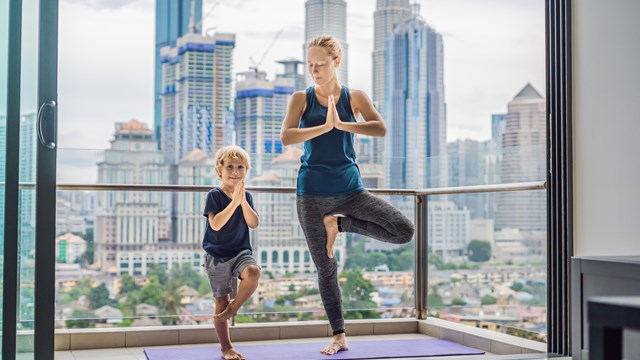It’s such a simple idea—covering your roof with plants—that it’s no surprise people have been doing it for millennia. From the hanging gardens of ancient Babylon to the terraced farmsteads of the Andes, working greenery into everyday architecture is a tradition that predates our modern “green” consciousness and repeats itself across cultures.
Historically, the United States has not been one of those cultures. We build bridges across fault-lined inlets and cities in bogs where hurricanes regularly come ashore. Nowhere is our tendency to thwart nature on prouder display than in New York, where towers of steel soar skyward with Icarian audacity. Even Central Park, the green oasis at the heart of the city, was not intended to preserve green space per se, but rather to show off our ability to bend nature to do our bidding—to tame the wilderness.
It is only in the last decade that the United States has really embraced the so-called green movement—but it is now doing so in the usual American fashion, which is to say with a vengeance. The green roof, not long ago the fantasy of tree-huggers, is quickly becoming reality in New York, as it already is in parts of Europe.
Many buildings in the city have patio spaces and gardens on their roofs, either as common areas to be enjoyed by all residents, or as part of penthouse apartment shares. As green technology becomes more cost effective and more politically viable, more buildings in New York are being built with or retrofitted with green roofs. Even non-residential complexes like the Javits Center and Lincoln Center are planning to install green roofs.
The Meaning of Green
In its simplest form, a green roof is just that—a roof layered with plants. Benefits of a green roof include savings in heating and cooling costs, improved air quality, better storm water management, creation of a beautiful space that owners can enjoy, and reduction of the “heat island” effect that causes cities to boil in the summer.
As mentioned, the idea has been around for as long as houses have, flourishing especially during the Renaissance and the second half of the 19th century. But the green roof in its modern form was developed in the same country that is arguably one of the greenest on Earth: Germany.
“Green roofs got their first big push in Germany,” says Stuart Berg, project specialist with Roofscapes, Inc., a green roof consulting company based in Philadelphia.
That push was not exactly fueled by environmentalist concern, but rather worry about another kind of green—money.
“It started from a storm water management standpoint,” Berg explains. Runoff from torrential downpours on houses was wreaking havoc on cities and towns, and fixing the problem was becoming prohibitively expensive. “In Germany, homeowners have been paying significant fees for discharge of storm water.”
One day, a thoughtful horticulturist suggested that a layer of vegetation planted on rooftops would absorb a great deal of that excess water, and voilà, a cottage industry was born. Green roofs have since made their way across the pond.
“In the United States, it’s increasing,” says Berg. “In cities, especially in New England and the Northeast Corridor, and in the Midwest. That’s where the climate is the most suitable.”
New York, with its glut of flat roofs and dearth of green spaces, is a natural fit for the green roof. And the state government has added financial incentive to help the movement grow. “In August, Governor [David] Paterson signed legislation to provide tax breaks for green roof installation in the city,” says Adam Szlachetka, who blogs on green trends in Albany for the nonprofit group GreenHome NYC. “The bill provides for a tax abatement of $4.50 per square-foot of green roof installed” until 2013.
Zoning is not generally a problem. “A lot of places, zoning encourages green roofs,” says Berg. “We haven’t had any instances where zoning inhibited it.”
Shades of Green
There are two main types of green roofs: intensive and extensive.
Intensive green roofs are what the name suggests—intense. They involve a deep layer of soil—sometimes as much a three feet—and can therefore sustain just about any kind of plant life. “They are commonly irrigated,” Berg says. “They are planted with whatever you want, from turf grass to trees.”
Basically, an intensive green roof is a bona fide garden—and because intensive green roofs require more maintenance, they are expensive, and therefore more rare than other types of green roofing schemes.
That’s not to say that an intensive green roof won’t eventually pay for itself and even save its host building money in the long run. “This market exists for financial reasons,” says Ed Snodgrass, owner of Emory Knoll Farms, a Maryland-based nursery that supplies plants and horticultural products for green roofs. “Reduction of the heat island effect, reduction of energy costs, management of storm water. The design is not ornamental; it’s financial, and it’s price-sensitive. These are the general parameters of the market.”
The other type of green roof is the “extensive” roof—and it’s by far the more popular of the two.
“These are shallow roofs planted with seeders, three to six inches in thickness,” says Berg. “They can be very basic. All they need is a drainage layer, some growth media (soil), and your plants.”
There are very specific parameters for the types of plants that work for extensive roof greening—not everything that grows is an appropriate candidate.
“They have to live through drought and the occasion inundation of storm water,” Snodgrass explains. “It has to be ground-covering species, so there’s not a lot of weeding.”
By the same token, your extensive rooftop plants shouldn’t be too hearty. You don’t want your plant to pollenate like crazy and take over Central Park.
“We don’t want the fish who ate Pittsburgh,” Snodgrass says, referencing the proliferation of the carnivorous, non-indigenous Chinese snakehead fish in North American waterways. “The plants tend to be hearty succulents, meaning they live, and they retain water.”
Why Go Green?
So how do you know if your roof is a candidate for greening? “It’s easy to tell in new construction,” says Berg. “You can tell from the dead loads the roof can withstand, which is determined by the beam construction. In a retrofit, you need to hire a structural engineer to come in and look at the building.”
There are many advantages to having a green roof, some more obvious than others. As we know, the plants on a green roof retain storm water—the reason the green roof revolution was sparked in Germany. But there are many more.
According to Snodgrass, “The public benefits are that one, [the proliferation] of green roofs lowers the temperature of the city” in the hot summer months. If enough green roofs go up around the five boroughs, those “dog day afternoons” will be less doggish. Secondly, Snodgrass says that more green adds more oxygen to the air, improving air quality.
Plus, greenery just looks nice. Roofs made of asphalt are not exactly aesthetic masterworks. “There are an estimated 944 million square feet of rooftops in the city,” says Szlachetka. “That’s about 11.5 percent of the total building area.” Imagine what a green-roofed Manhattan or Brooklyn would look like from the sky!
In addition to the public benefits, individual buildings who green their rooftops enjoy some significant perks. Unlike a regular asphalt or tarred roof, a green roof does not need to be replaced every 15 to 20 years.
“A green roof will last the life of the building,” says Snodgrass.
The layer of biological thermal mass also helps reduce the cost of heat and air conditioning within the building, although not in large increments.
“The reduction in heat and A/C costs is not a year or two payback,” Snodgrass says, “but there is an annual savings there. It depends on the shape of the building what kind of energy you save.”
High-rises aren’t as optimal because the roof is a smaller percentage of the whole building. But the brick co-ops all over Brooklyn and Queens are another story.
“The most obvious benefit is in a large-footprint, three-story building,” Berg says, “just from the added thermal mass of the green roof. Especially in the summer, when it actually cools the building.”
The return-on-investment may be spread over a long period of time, but then, it generally behooves a cooperative to think long-term.
“The general feeling is that it’s about 15 to 20 years” before the investment is fully returned, says Snodgrass. That’s when you get to skip paying for a full roof replacement. “At that point, the savings become pretty dramatic.”
How much will a green roof save your co-op or condo in day-to-day or month-to-month expenses?
“Average per square-foot cost estimates for green roofs can vary widely,” Szlachetka says, so it doesn’t make sense to try and nail down exact dollar figures for installation and monthly savings that would be meaningful to every board in every building. It depends on a number of factors: shape of the building, height of the building, whether or not residents will be allowed to access the roof.
One immediate upside is that green roofs demand very little in the way of regular maintenance. Berg estimates that a typical green roof requires four hours of work per one thousand square feet per year—and most of that is weeding. Also, a roof that is already sealed—which description hopefully includes your roof—requires little more than a thin layer of felt-like material underneath the soil.
Berg says that he’s never encountered a structural problem caused by the installation of a green roof, but that if a problem develops with the underlying roof, the soil and plant material must be excavated and the problem located and repaired. Then the excavated soil and plants are replaced.
Another understandable question often asked about green roof projects— especially by the folks living on the top floor of a building considering such a move—is that of potential damage from leaks. “We have a drainage layer to move water quickly to the drains,” says Berg. “The most important thing is that the roof’s waterproof membrane is intact and functioning.”
“If the problem can be localized, you would just excavate the green roof and fix it locally,” Berg continues. “If there’s a problem with the roof deck or the waterproofing, then you’d have to excavate the green roof.”
Green Scene
Whether it’s a fully landscaped park-like garden high above street level, or some judiciously planted ground cover, green is the color of the future. It’s also the color of the money your building may be able to save by implementing green roof technology on your own rooftop. It might also be the color your neighbors turn with envy when they see your residents sunbathing and strolling, or get a look at your building’s bottom line.
Greg Olear, a freelance writer and soon-to-be novelist, is a frequent contributor to The Cooperator.







Leave a Comment